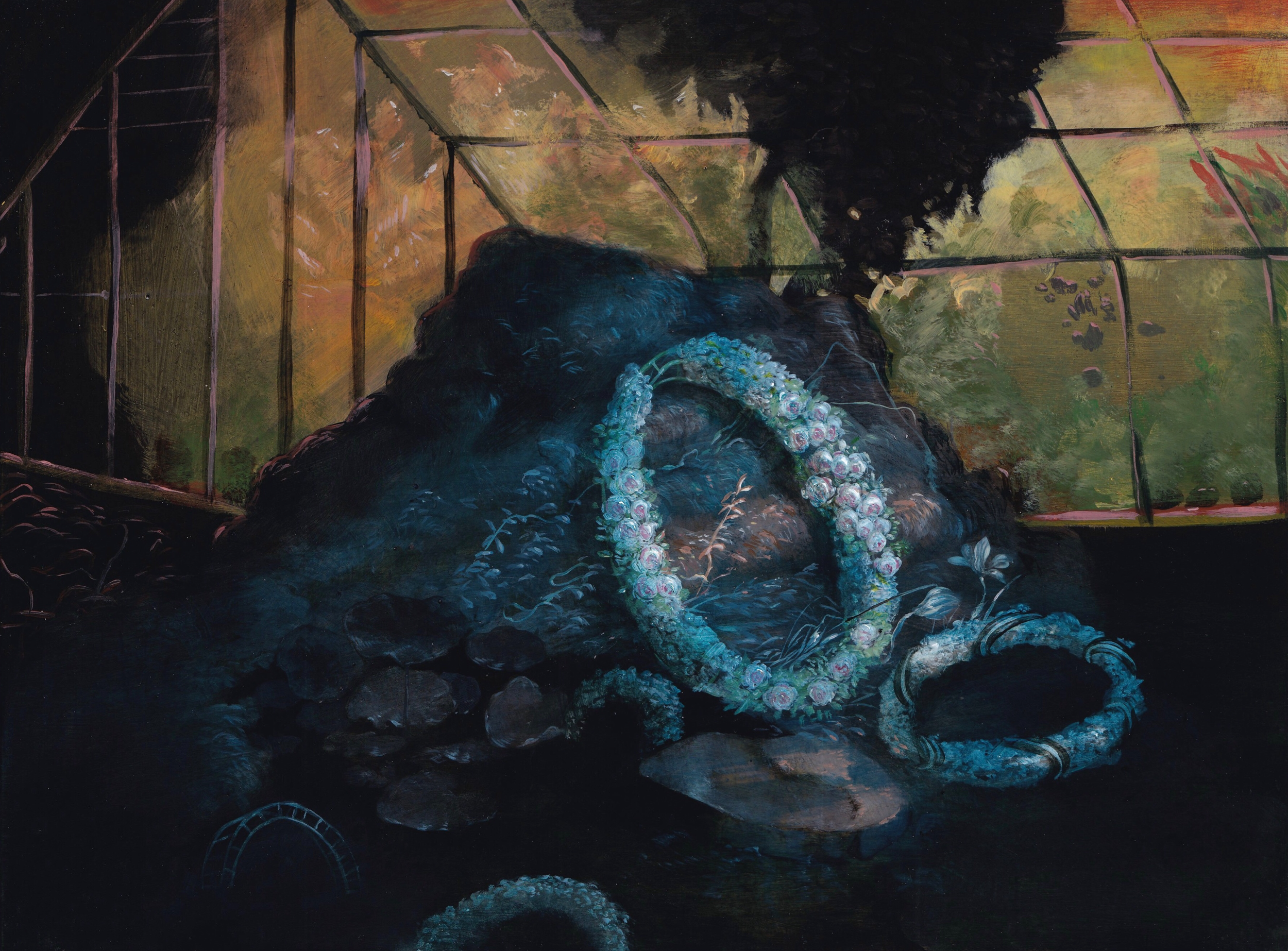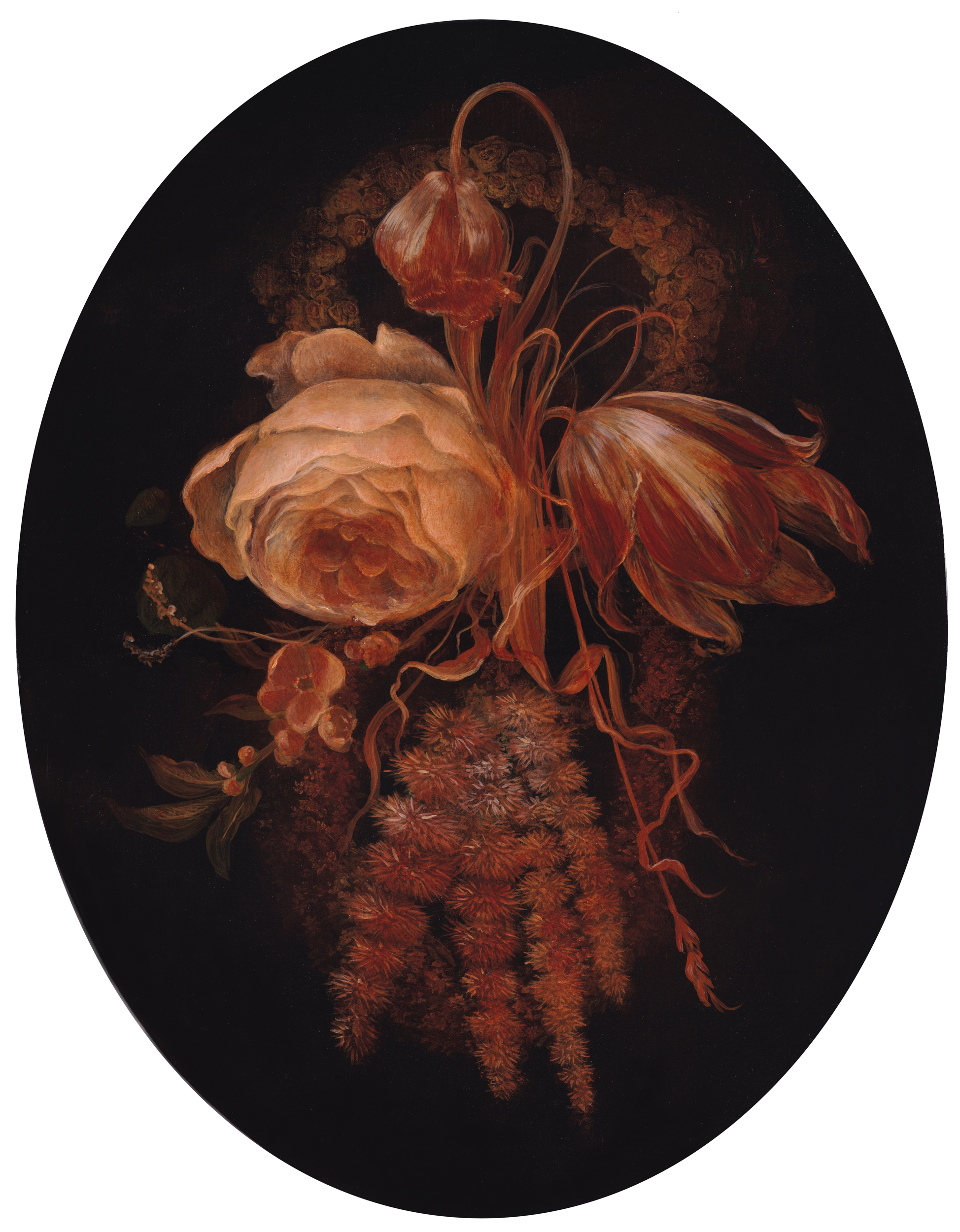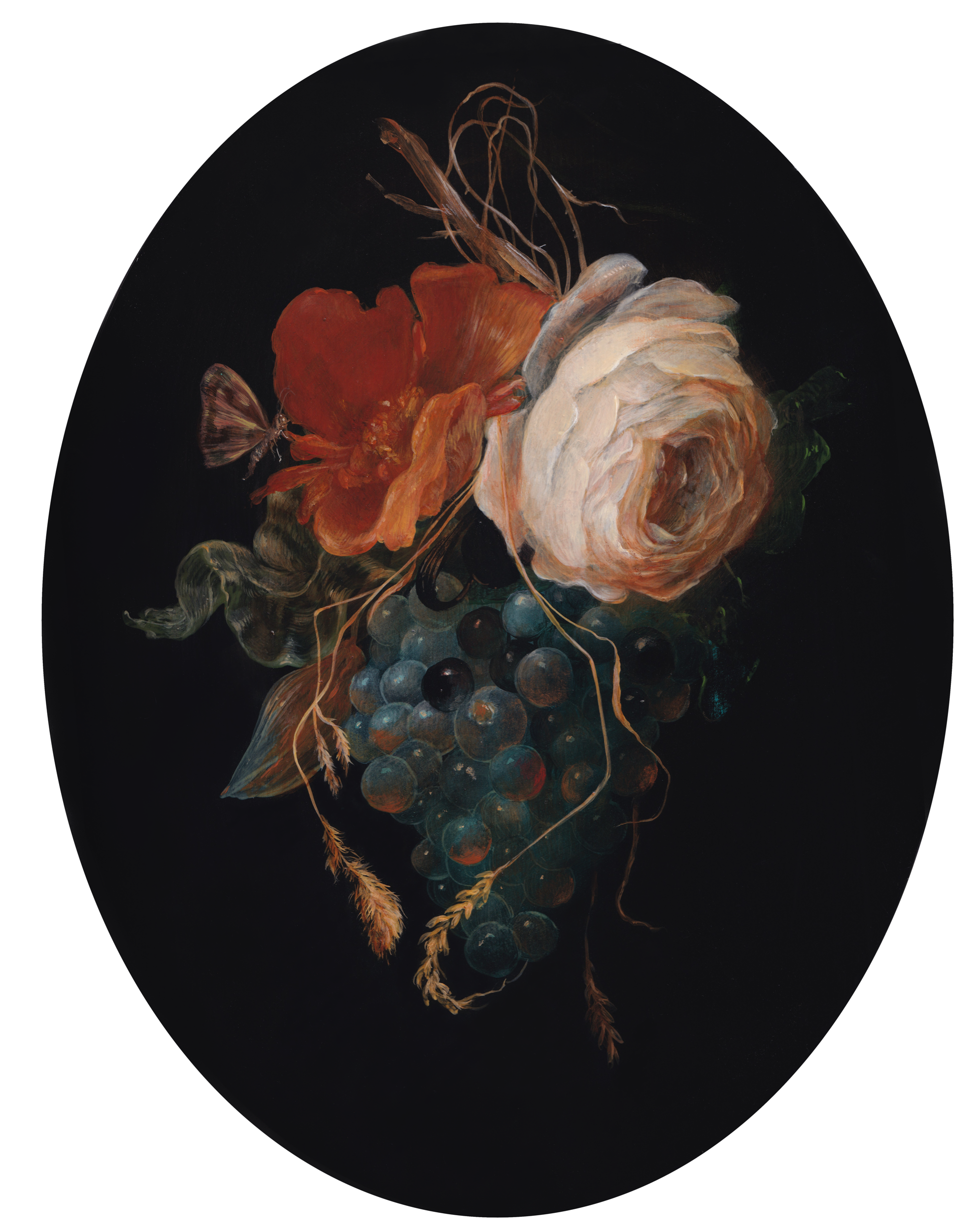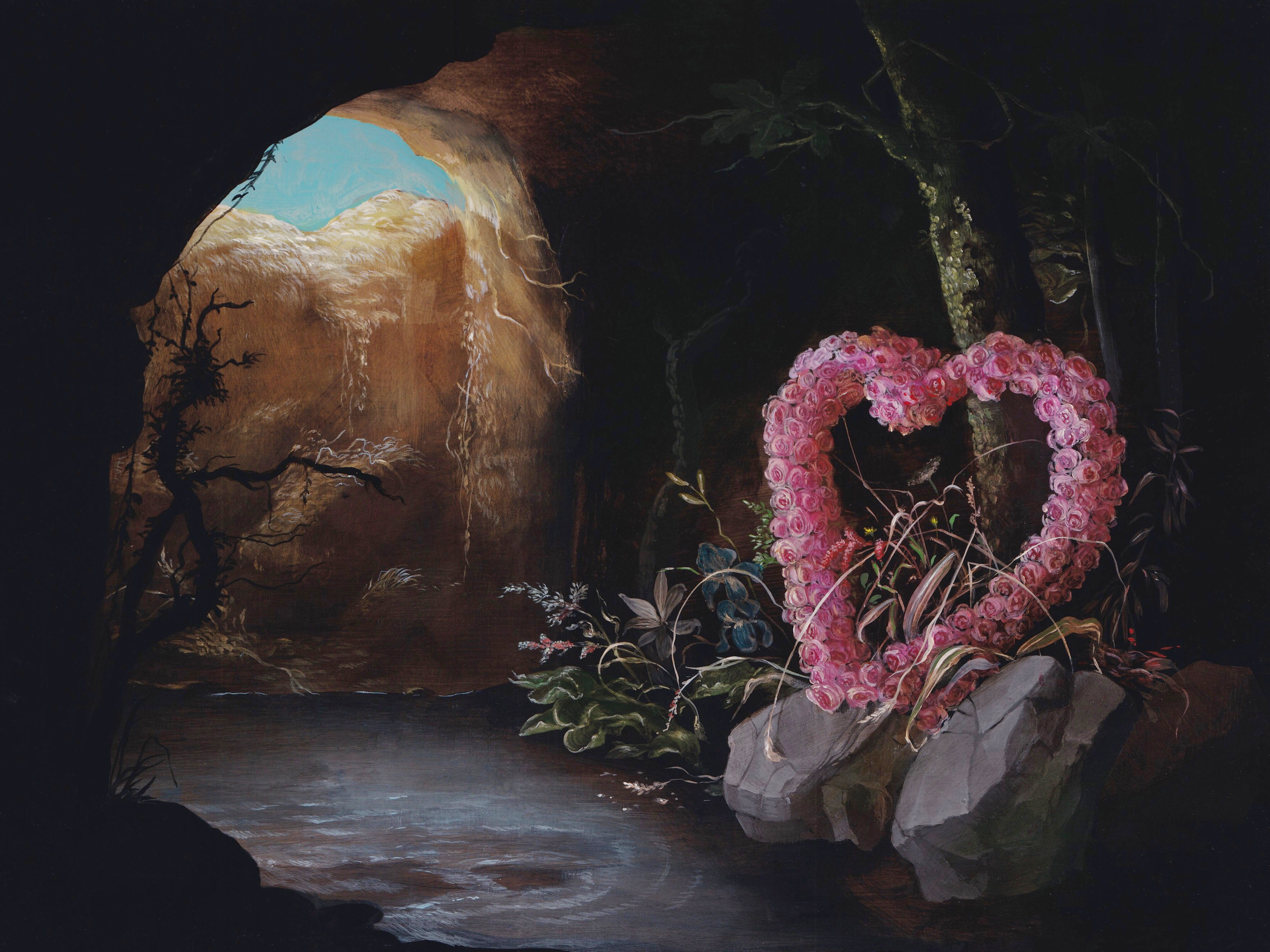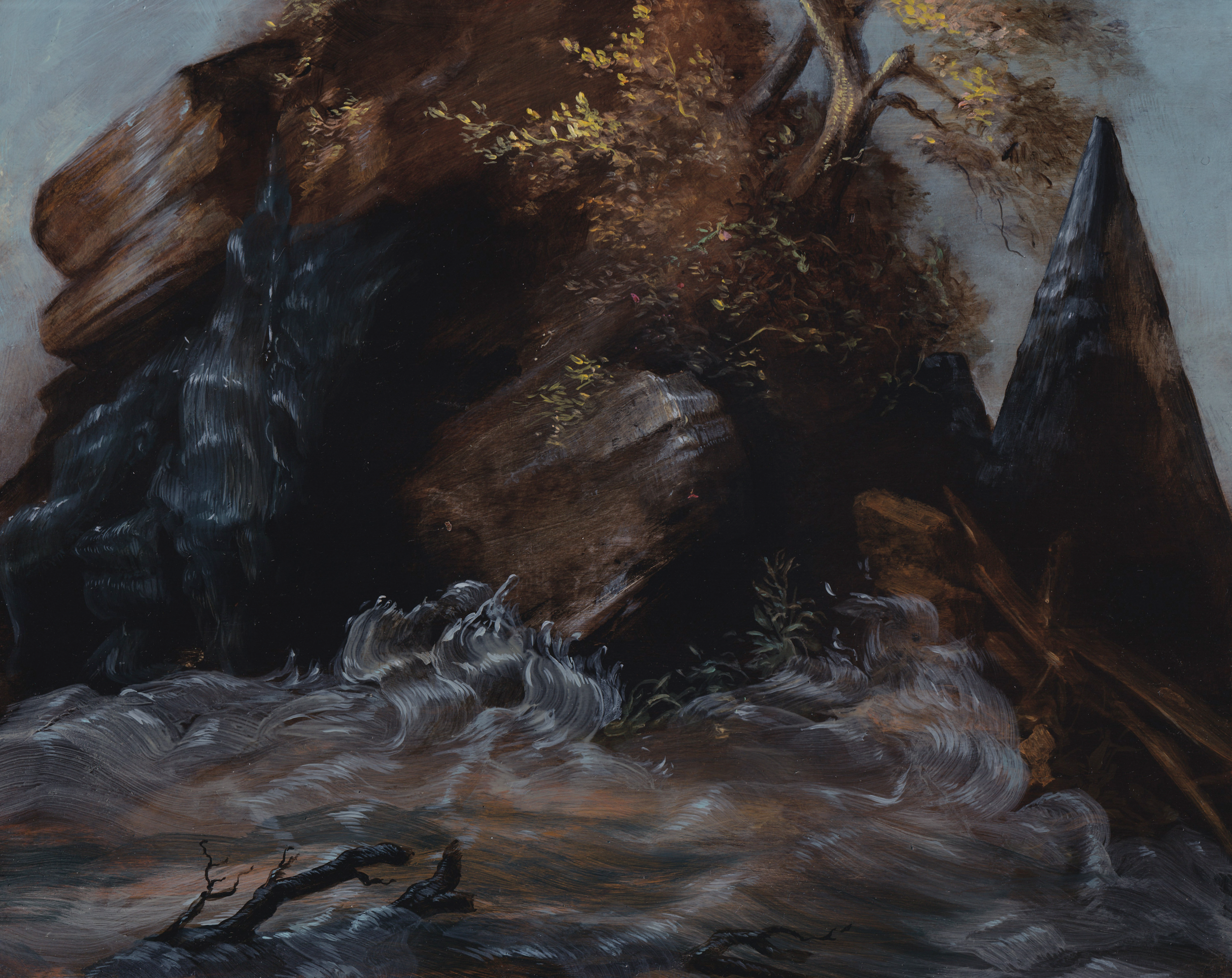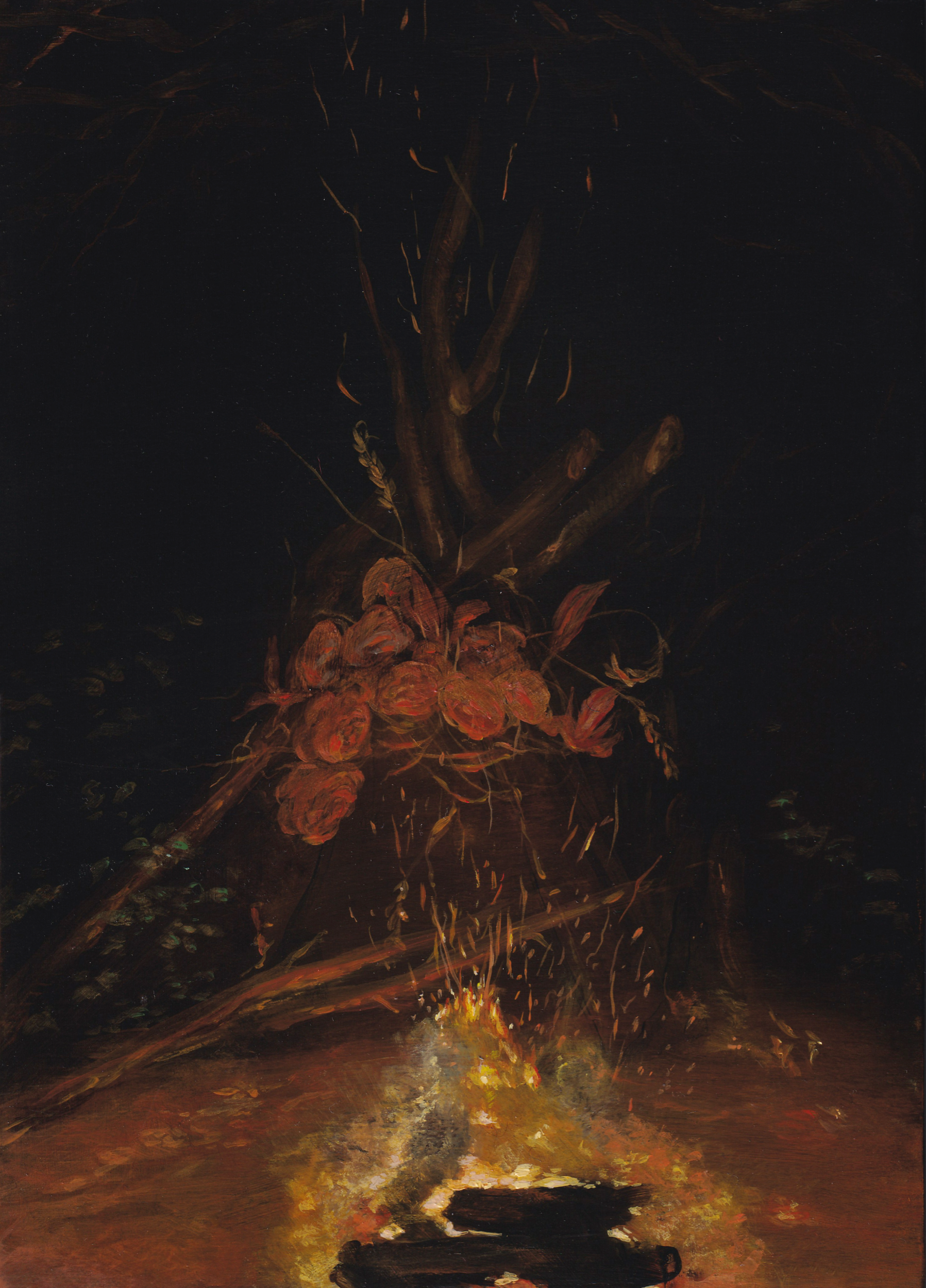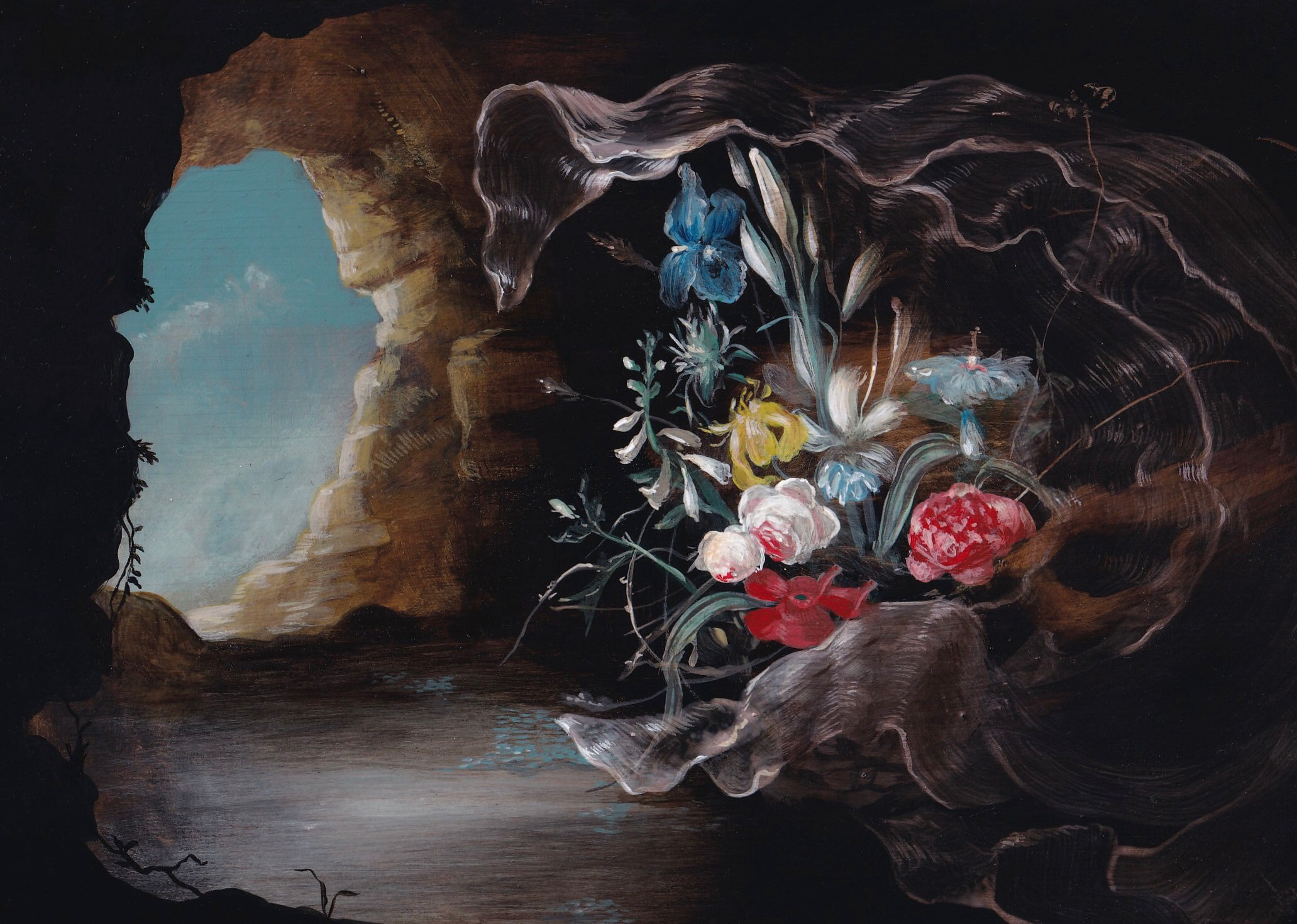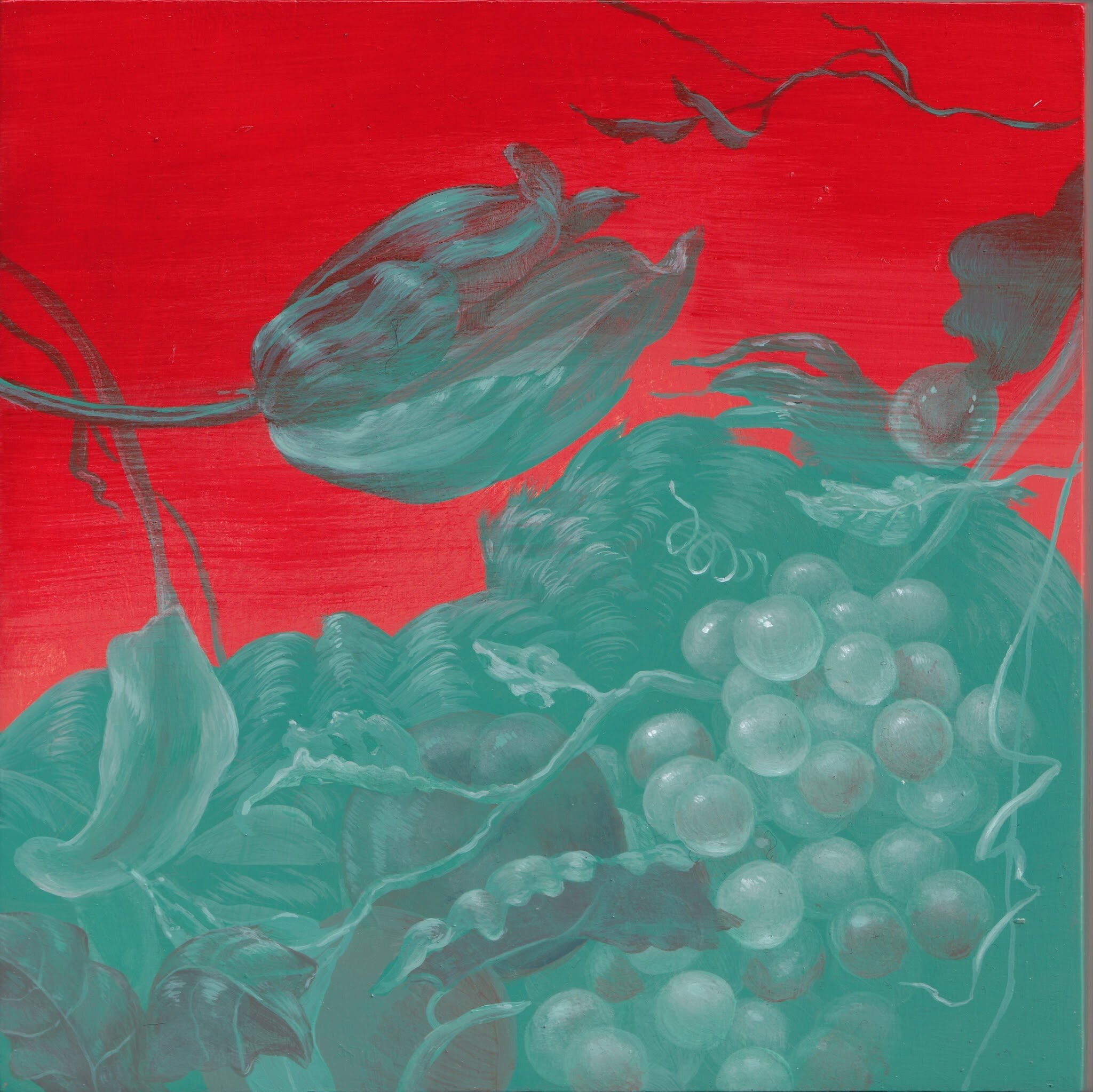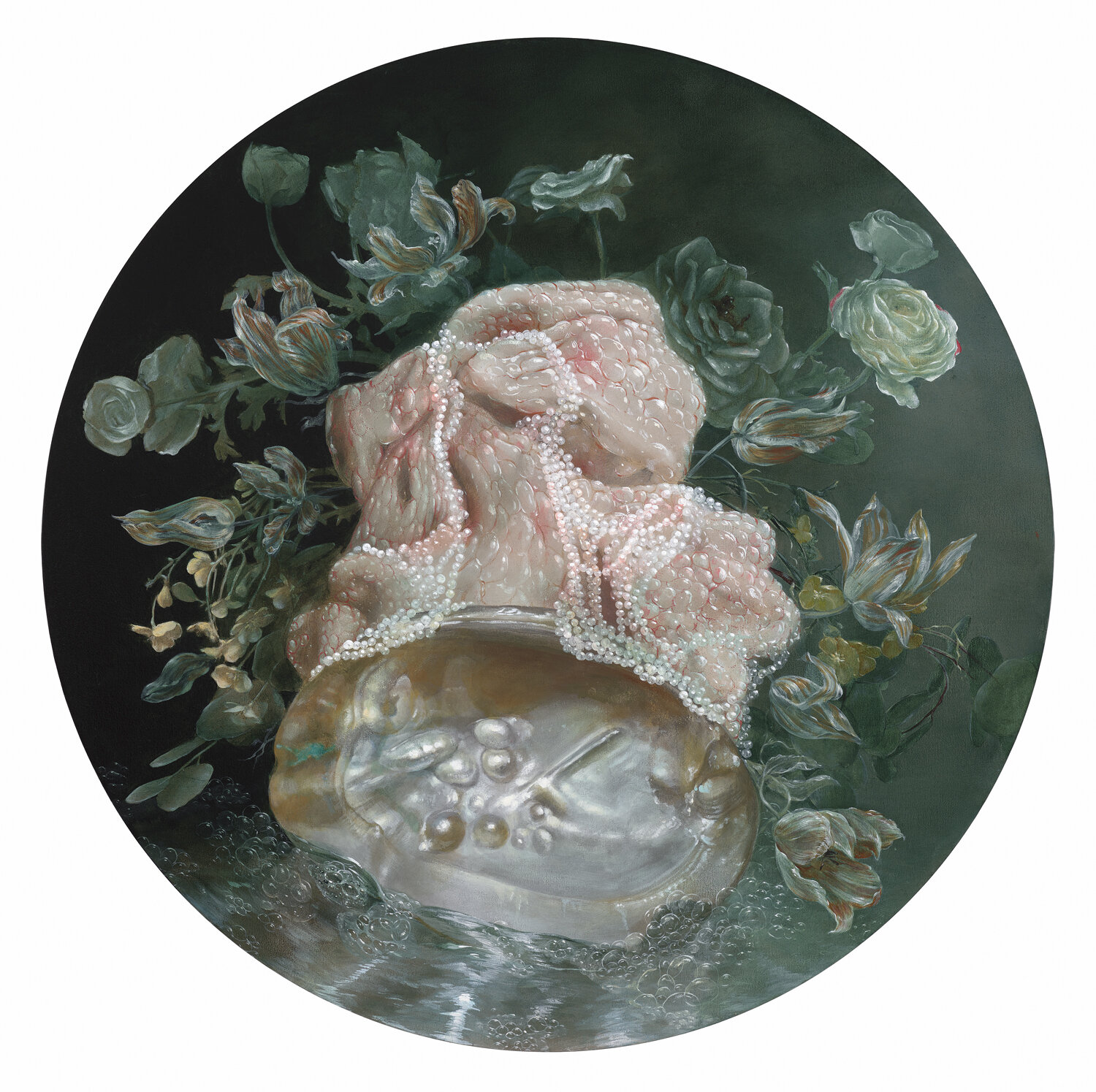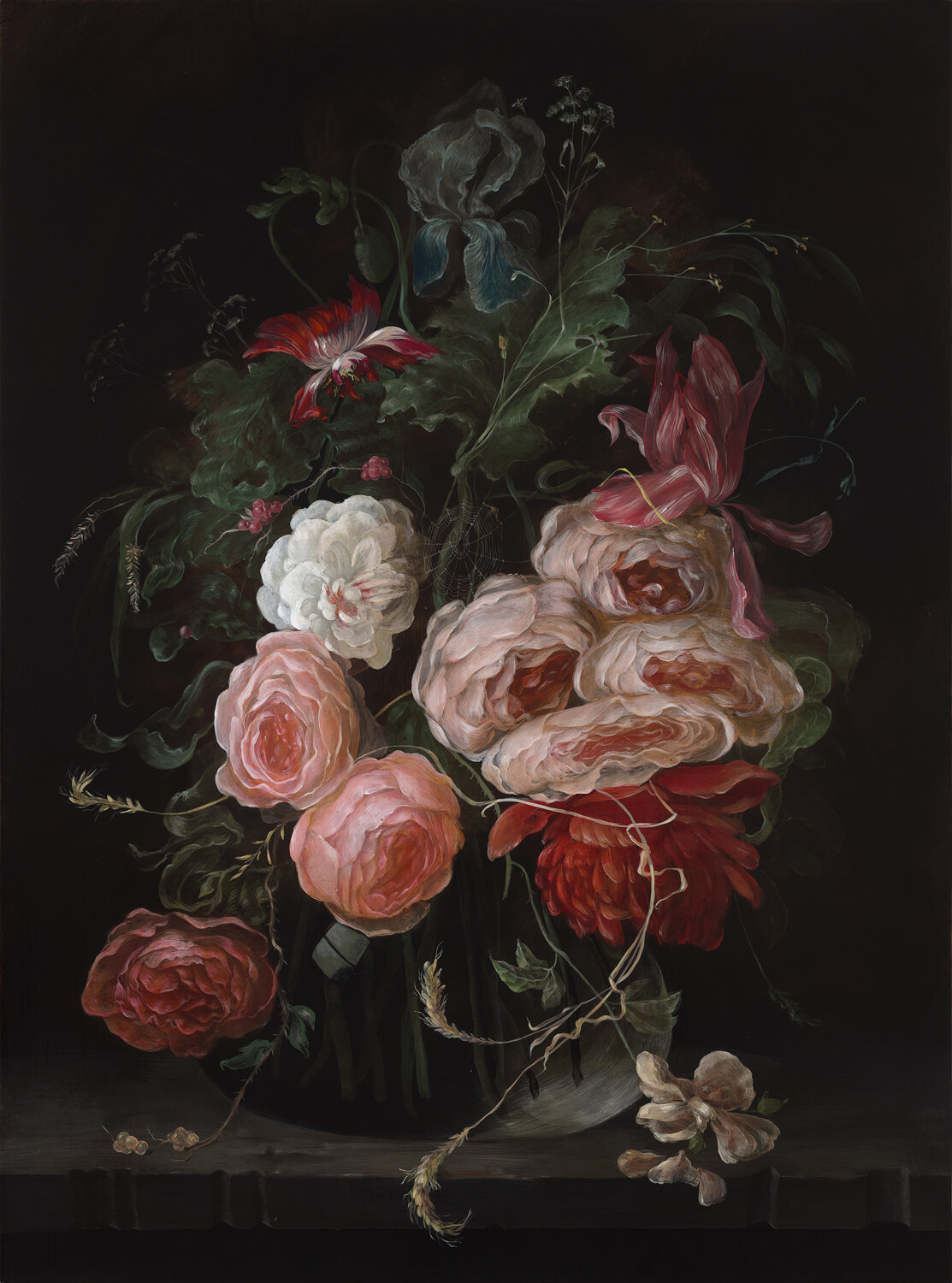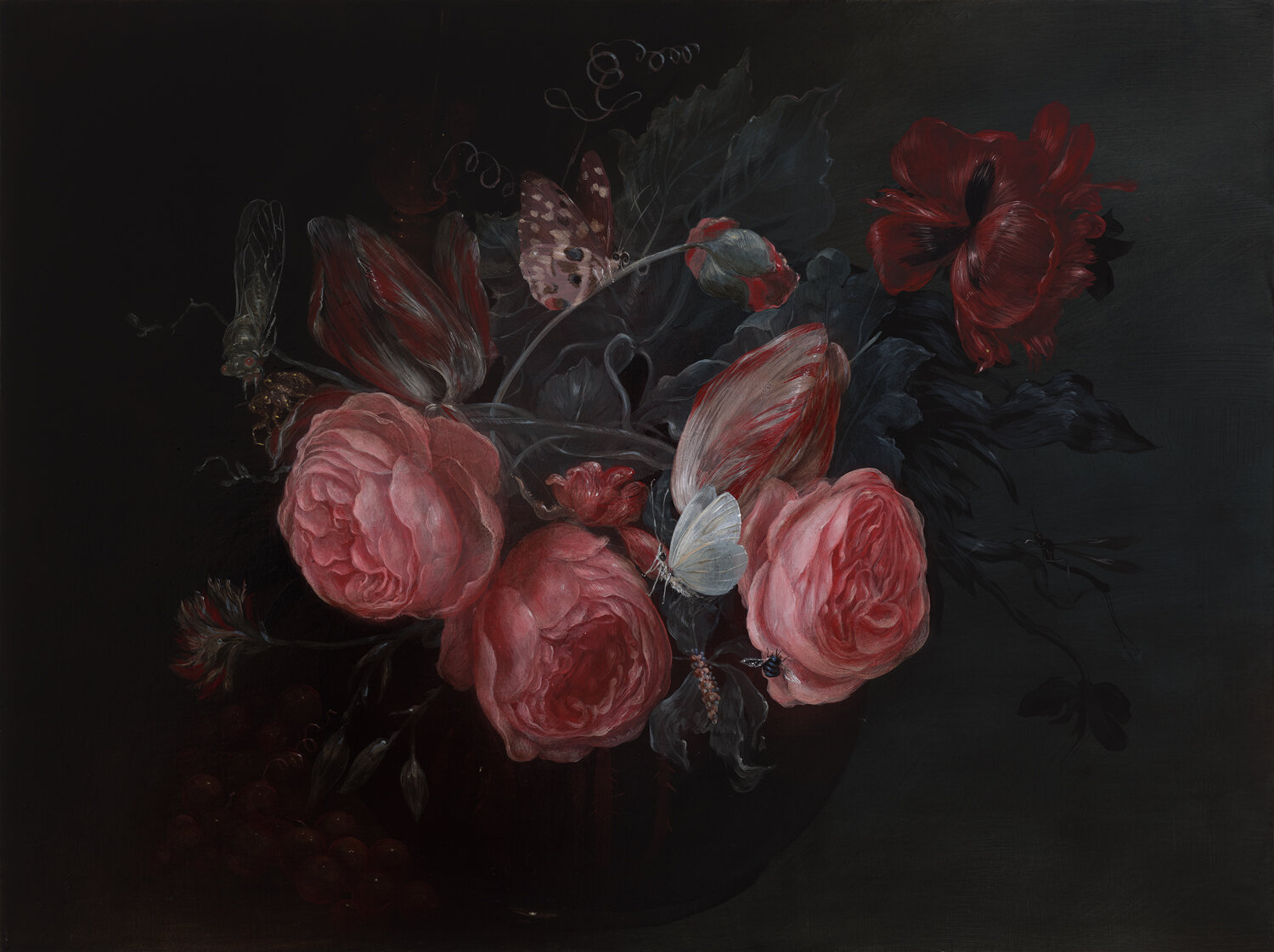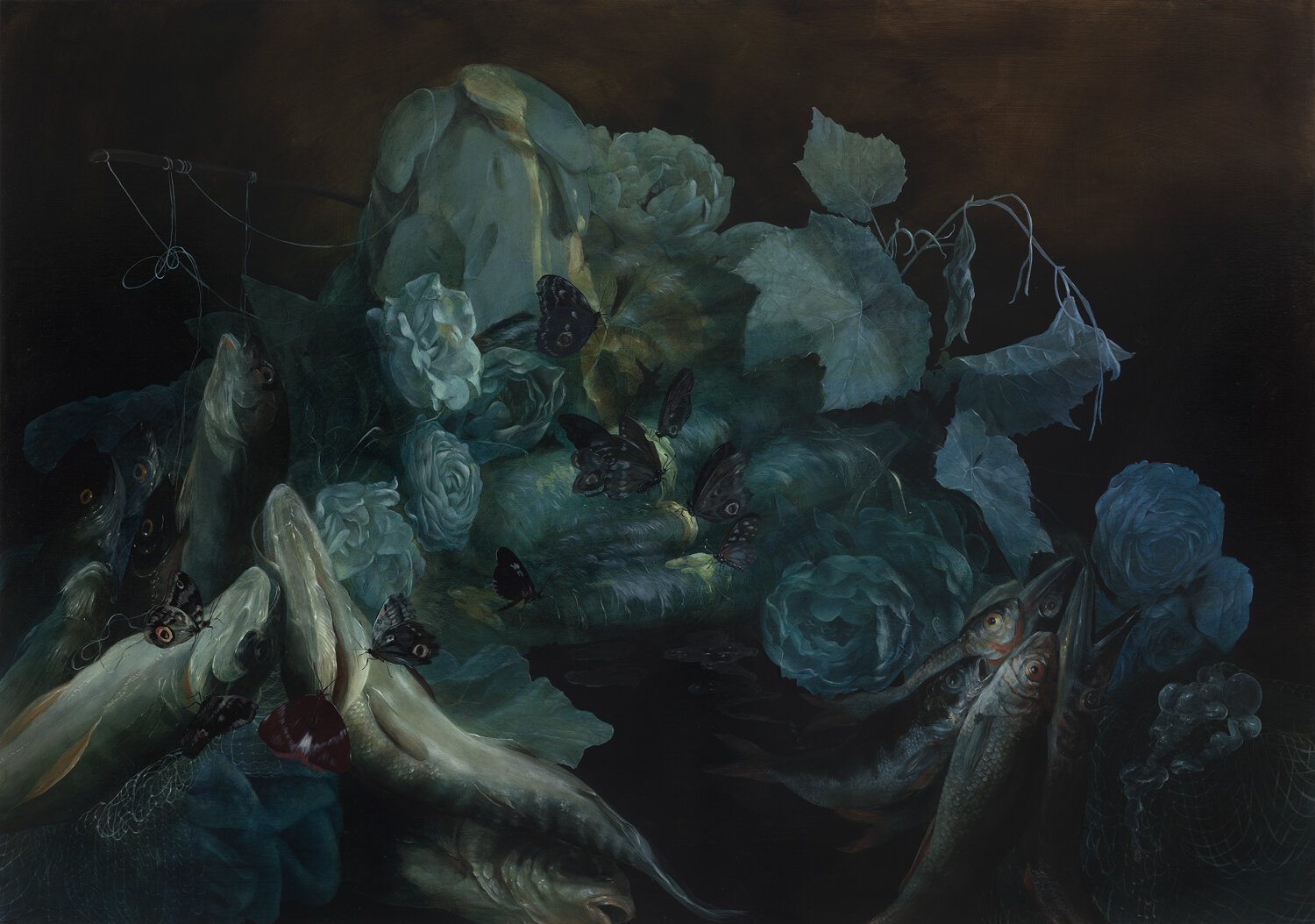floral hex
13FOREST Gallery, 2021
Nicole Duennebier’s signature approach to painting is grounded in her appreciation for the history of art. A casual glance at her work will immediately suggest various historical references, from the Old Masters and Dutch still lifes to Rococo landscapes. However, the true pleasure of experiencing her paintings comes from closer observation, which reveals the remarkable ways that Duennebier learns from and transforms those historical influences to create something truly contemporary and compelling. In her latest body of work, Duennebier draws on intense study of seventeenth century still life painter Abraham Mignon to delve into a subject matter that is historically ubiquitous but new to Duennebier – flowers.
The decision to address a subject so traditionally associated with beauty and femininity was a difficult one for Duennebier. She never wants to provide her viewer with too much pleasure; her previous bodies of work seamlessly meld the beautiful with the grotesque, offering a viewing experience defined by both attraction and revulsion. This new work marks a departure from the pseudoscientific fascination of her earlier work with biologic forms and processes such as rotting and the growth of mold. In Floral Hex, the beauty of her subject matter is instead complicated by the emotional underpinnings of the paintings, which present scenes of isolation and incongruity.
While Duennebier’s previous solo exhibition View into the Fertile Country expanded her scope to landscape for the first time, in Floral Hex she turns her focus to interiority, both in terms of location and psychology. Fascinated with the idea of out-of-place memorials, Duennebier began painting delicate floral wreaths, creating mysterious shrines within claustrophobic caves or deserted landscapes. The abandoned wreaths evoke mourning, but in the absence of mourner or mourned the scenes become a strange melodrama. Her Hothouse Bouquet paintings are both ethereal and peculiar, with squashed flowers and fluorescent pink insects, while in another still life she pairs diaphanous blossoms with piles of glistening dead fish.
In Duennebier’s latest body of work, beauty is always tempered by something unsettling, be it a waiting spider web, a slimy pile of meat, or an encroaching cave with a narrow exit. Duennebier calls upon the knowledge of historical masters to achieve her ambitious textural and compositional effects, imbuing their techniques with her own anxieties and preoccupations in order to cast her Floral Hex.
Caitee Hoglund, 13Forest Director
